AutoLayka: an overview of the possibilities of the system of automatic watering of plants for home or office
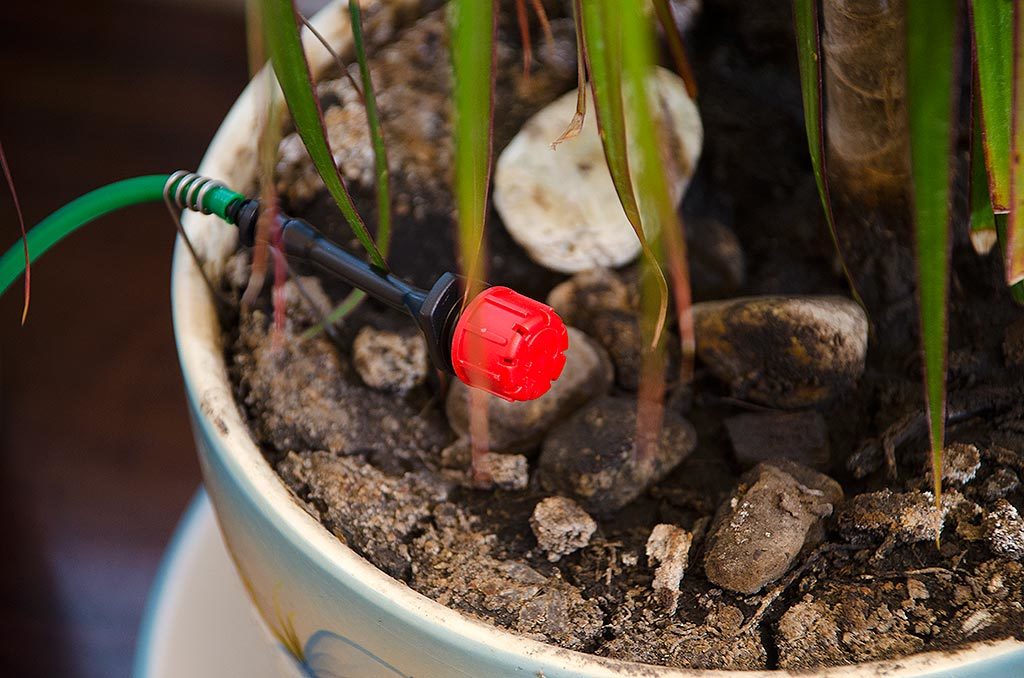
There is a task - watering my mother's flowers when she leaves for a long time. She can be solved by walking to her once in several days, but there is not always time and opportunity for this. A solution is needed - to automate this process.
I have already begun to build in my mind a combination of arduino and water pumps through executive relays or systems of solenoid valves 3/8 inch and electric programmable timers ... However, it turned out that the Network has a ready-made solution - Autostrip. Her charm is that she (unlike any other arduin and other fascinating geek-collective farm) has a complete, aesthetically acceptable appearance and simple control, which means that she can be presented to her mother for an upcoming birthday.
In general, AutoLayka needed to check the functionality - can not I give my mom a gadget that doesn’t understand how it works? I want to share the results of this test with the information field of the Universe.
The set of “Auto Layers” looks like this:

The main execution unit is a one-piece assembly of a complex configuration:
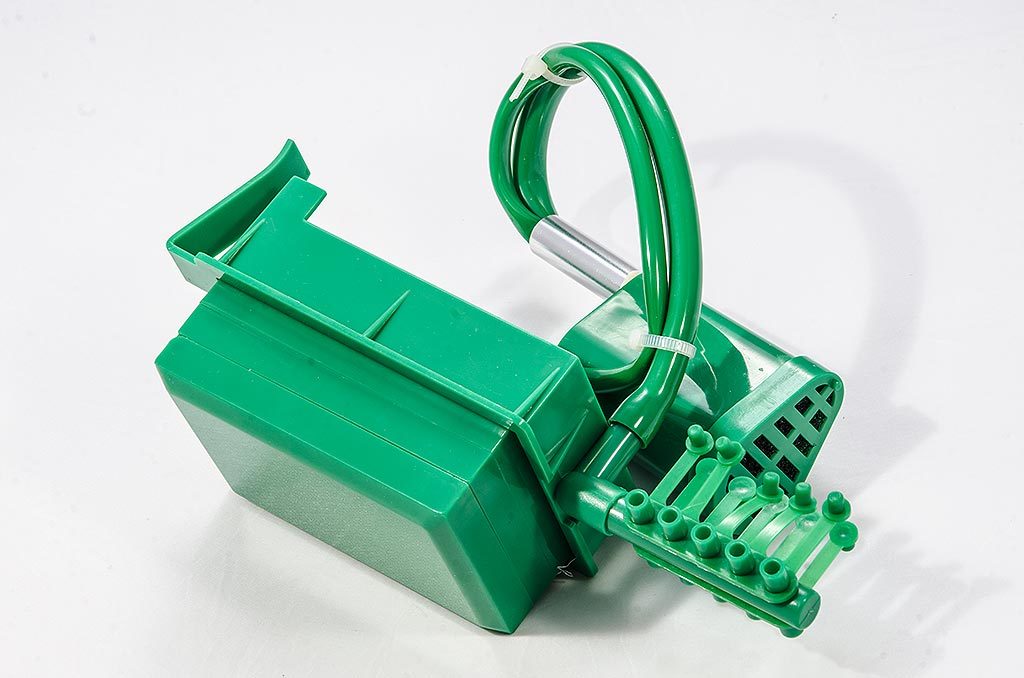
... including a submersible pump, a hydraulic distribution unit and a control unit. Installed on any bucket, hooked over the edge:
The system is powered by four elements of the AA format:
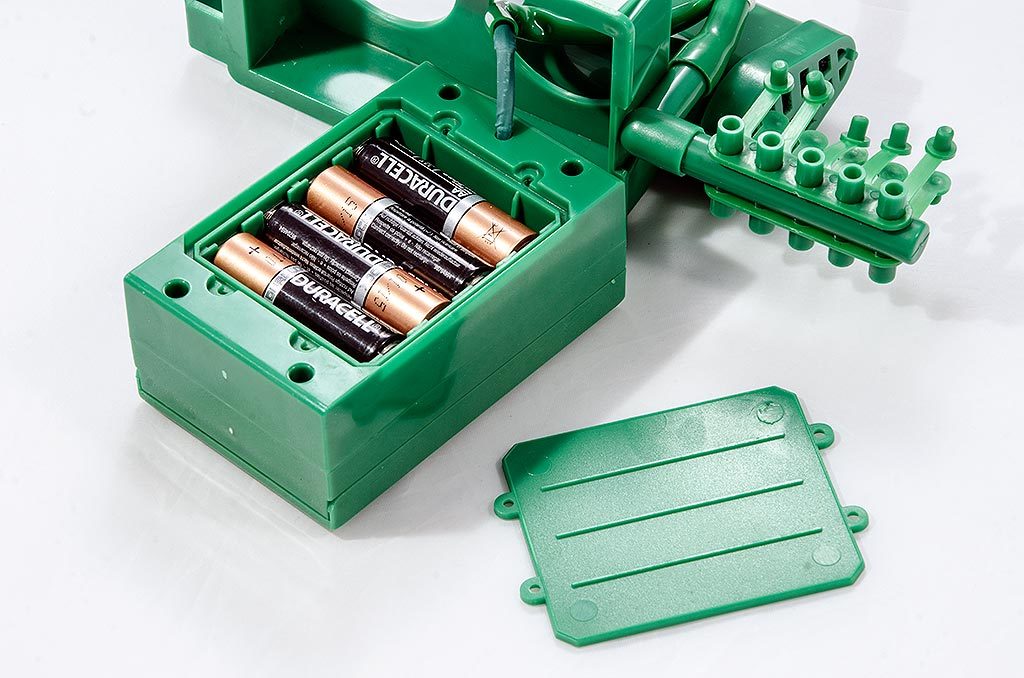
Here I saw two at once, though not very significant, but a disadvantage.
Firstly, I do not really understand this basic installation on autonomous power. This is not a mobile gadget, ideally it was attached to a bucket - and forgot, just pour water. Why it is impossible to provide a connector for an external standard power supply unit at 5V? The water pump is not a quartz watch for you, consumption is noticeable. The situation when you went on vacation for a month, relying on automatic watering, but on arrival you found dried flowers and a gadget flooded with electrolyte from leaked batteries, does not look incredible. Yes, the manufacturer promises to work up to six months from one set, but you and I are well aware that this is a spherical term in a vacuum - the batteries are different, the irrigation mode too.
The second drawback will seem to someone to be insignificant at all, or not at all a disadvantage, but for me it is important - it is the fastening of the battery cover on the self-tapping screws. They are so tight and tight that I couldn’t even be able to twist them to the end with the duty multitool:
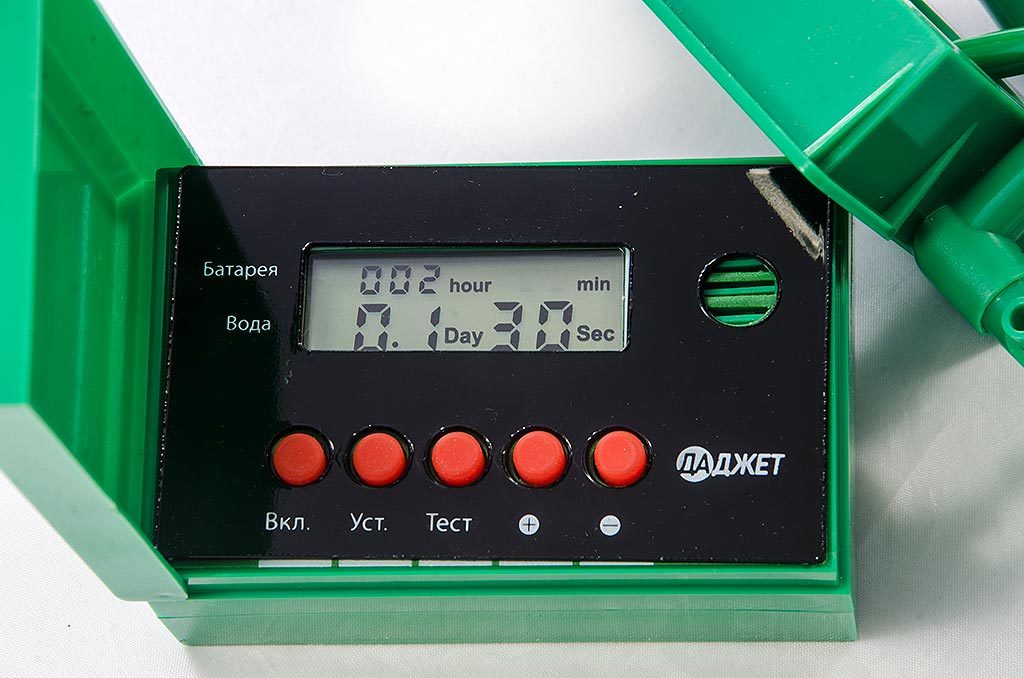
I had to climb into the cherished chest with a professional tool for a good screwdriver with a hard-tipped tip of the correct profile. What does this mean in my case? That my mother cannot change the batteries herself, I have to do this every time. Can't I give my mom a screwdriver in the kit? In general, again, I do not understand what kind of technological need has forbidden the battery cover to be made on the latch.
I thought about immediately after the end of the warranty, insert some power connector into the case, and let it work from the outlet. If you get a little stronger, you can implement a tiny rechargeable battery inside, so that in the event of a power outage, the program is not reset - but I would just power it on the UPS for the duration of the holiday.
Okay, back from tuning to stock. The control unit is a box with a display and buttons, on which a plate with Russian inscriptions is slightly casually stuck.

I immediately itched my hands to tear it off and see what was there, under it - but, fortunately, it is not necessary - on the packaging the unit is depicted in the original:

Nothing interesting, the same thing, but in the language of a potential adversary. Since the indicator is still in English, the need for this sticker is controversial.
Inside the block we see one single-sided board:
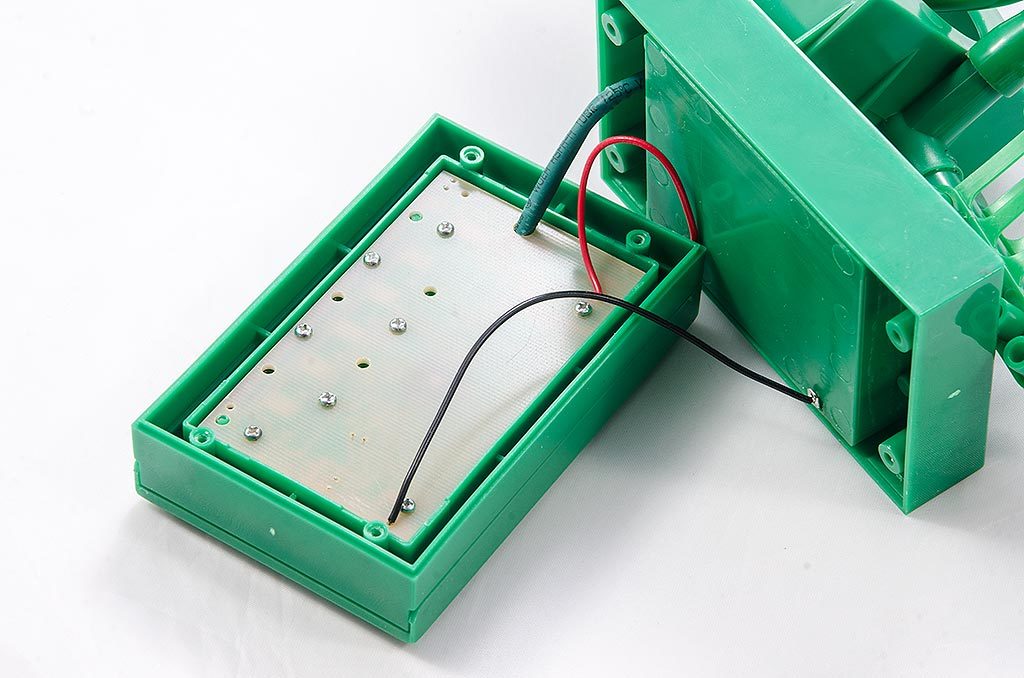
On which a timer chip is poured with a drop of the compound, there are rubberized programming buttons and a signal buzzer.

Separately, a simple display is connected via the contact pad. A constructive-elemental solution hails from the 90s, but, by the way, there’s no high technology. A squeaker on the board reports a low battery or no water in the tank — I didn’t open the pump, but the fact that four wires come from it (plus / minus power and two more) hints at the presence of an appropriate sensor. Directly the pump is controlled by the timer command transistor B772.
The design does not like disassembly, the cable harness to the pump, embedded in the usual heat-shrinkable cambric, immediately showed insides:

Which, however, does not affect the performance of the device and is a consequence of my manipulations, and not a design defect.
The watering timer is programmed easily and simply, it is enough to set two digits: “N times per day” (can be fractional) and the duration of the pump in seconds. So, let's say, if you set the number in the Day field to 0.1, then watering will be 10 times a day, and if you put 30 in the Sec field, then each watering will last half a minute. The top line at first was puzzled by me, but then I realized that it shows the time in hours and minutes until the next watering.

The hydraulic distributor is arranged quite simply - it is a tube with 10 holes, like a flute. Each hole can be attached to a thin hose for watering a single plant, or this hole should be plugged with a complete plug.
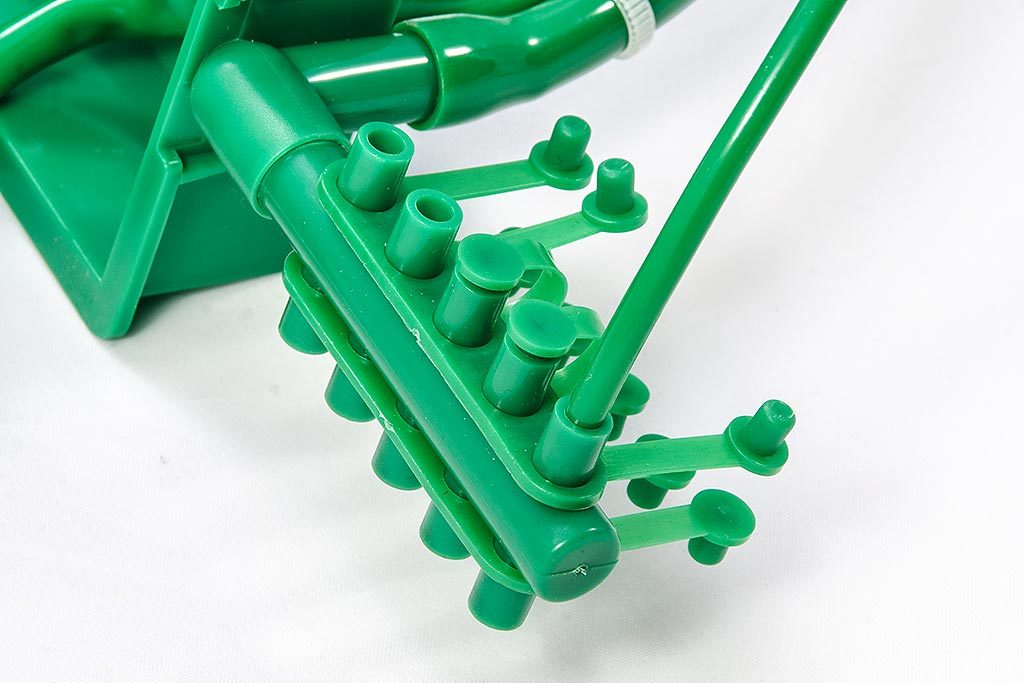
All connections are strictly friction, but with such a weak pressure in the system this is enough. There are 10 meters of hose in the set, ten irrigation channels too - so if there are many plants, they will have to be placed in a circle at a distance of no more than a meter from the autoleading.
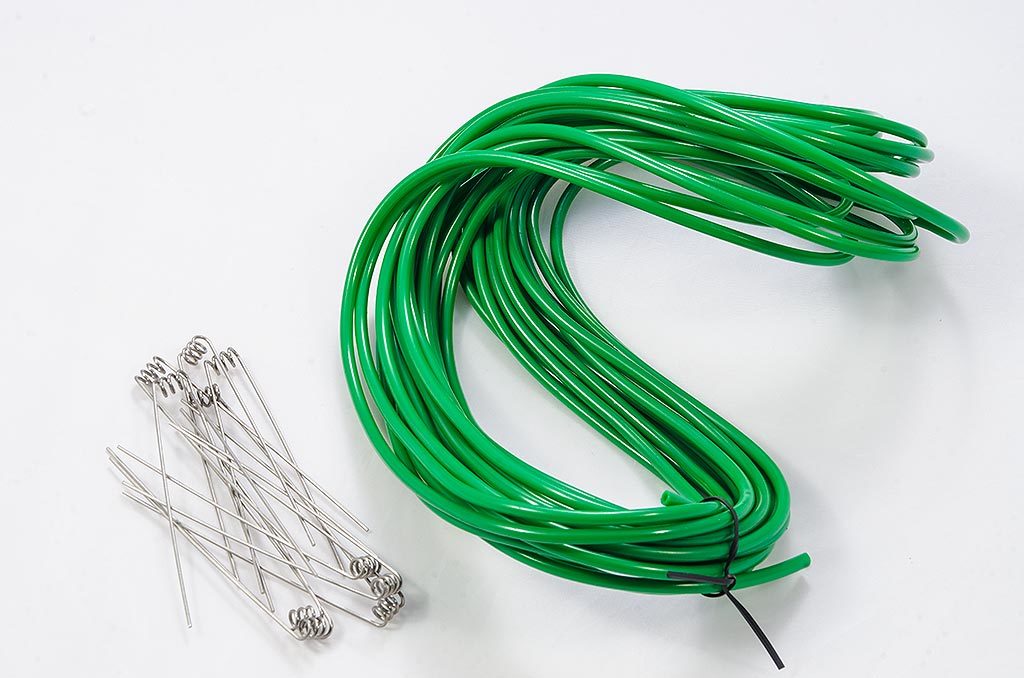
Funny metal twists on the photo - this is the regular mounting of the hose in the pot. A hose is being passed through them:
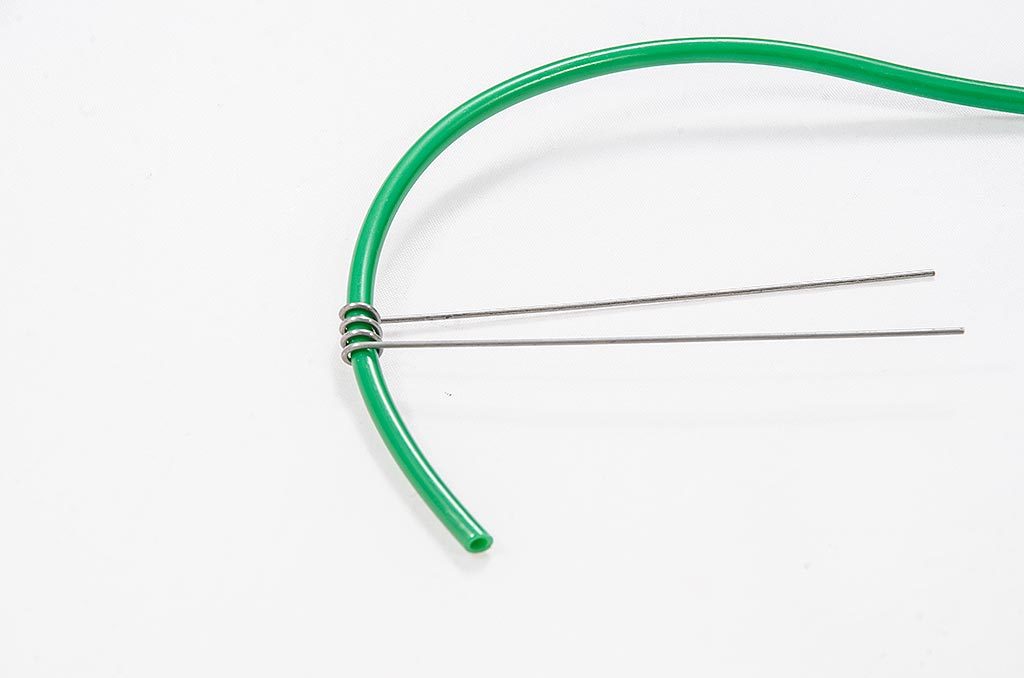
And they stick into the soil:
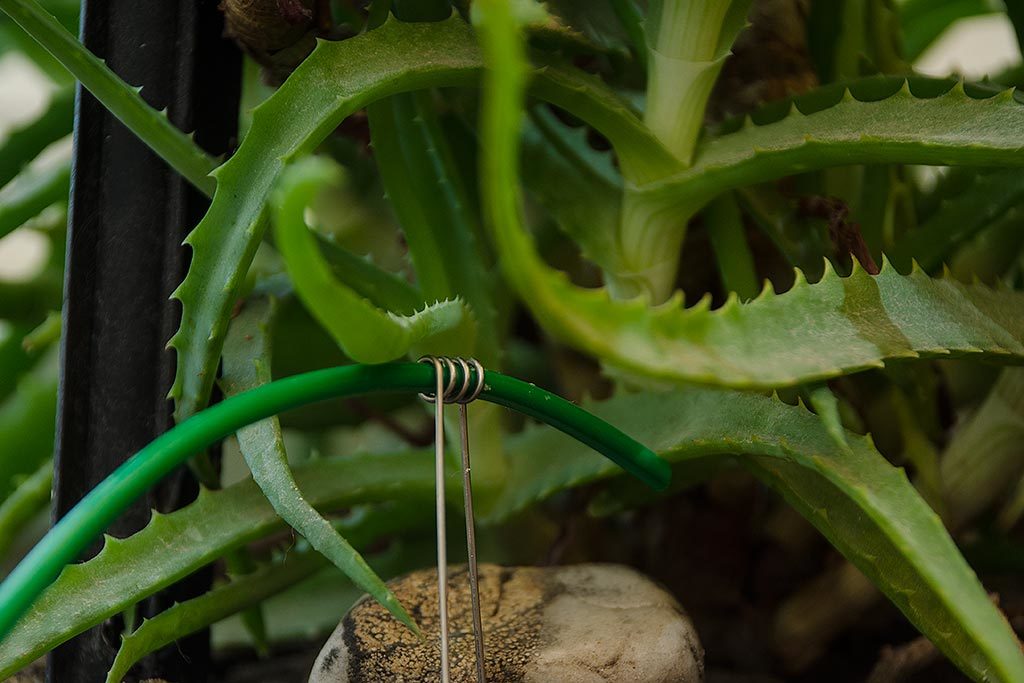
Again - simple, but effective.
What is the system performance? Checking:
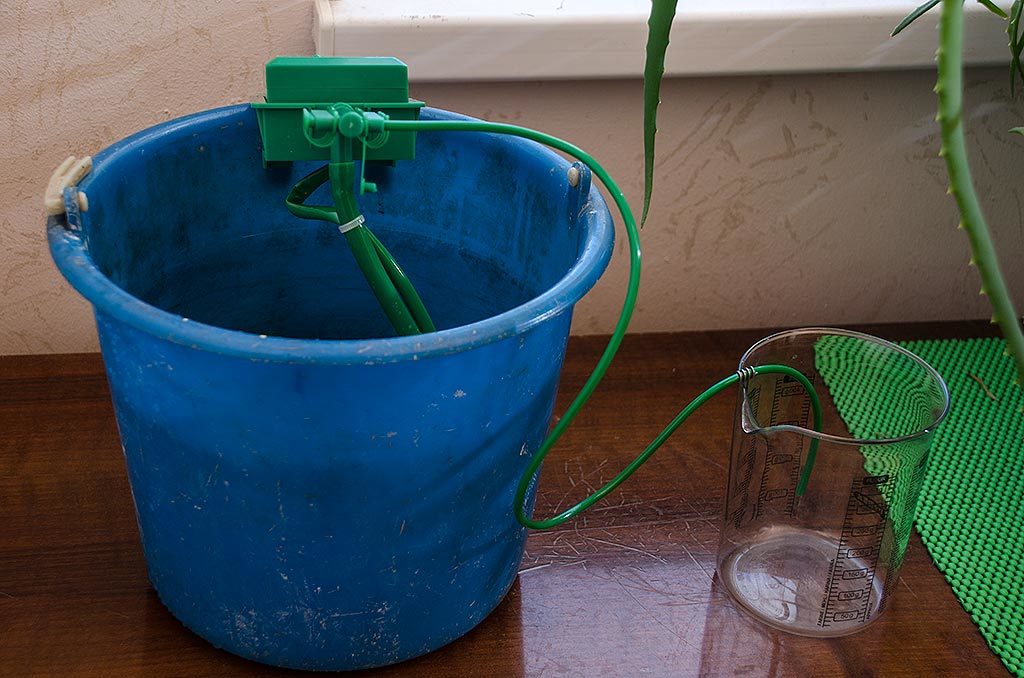
In thirty seconds, 80 milliliters of water was poured from one tube. Of the two - 160 and so on.
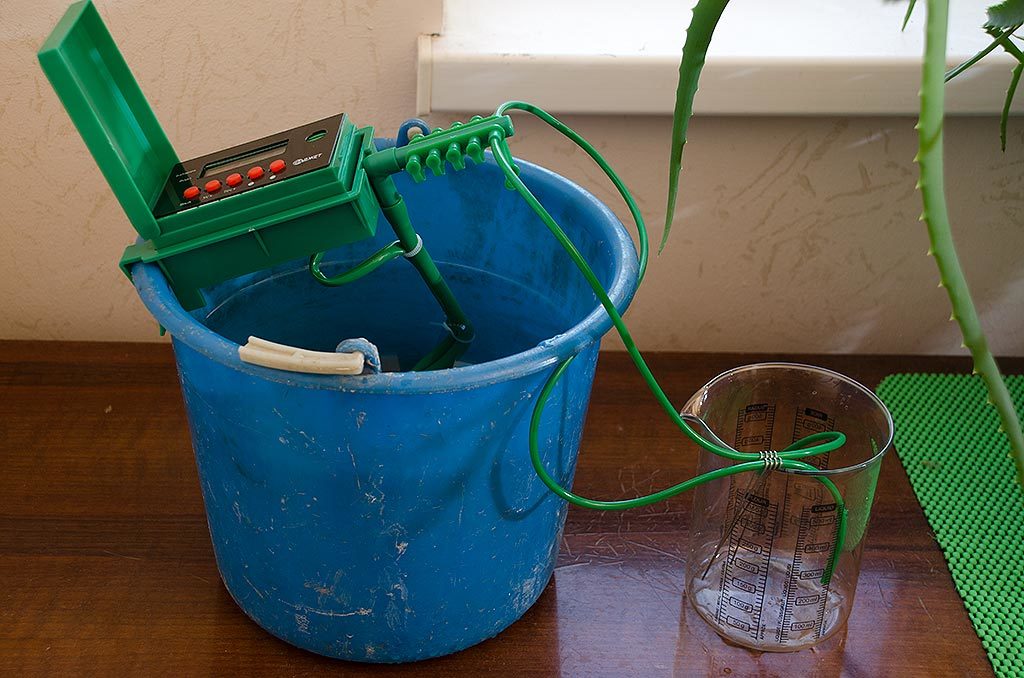
Limits not pump performance, and tube section.
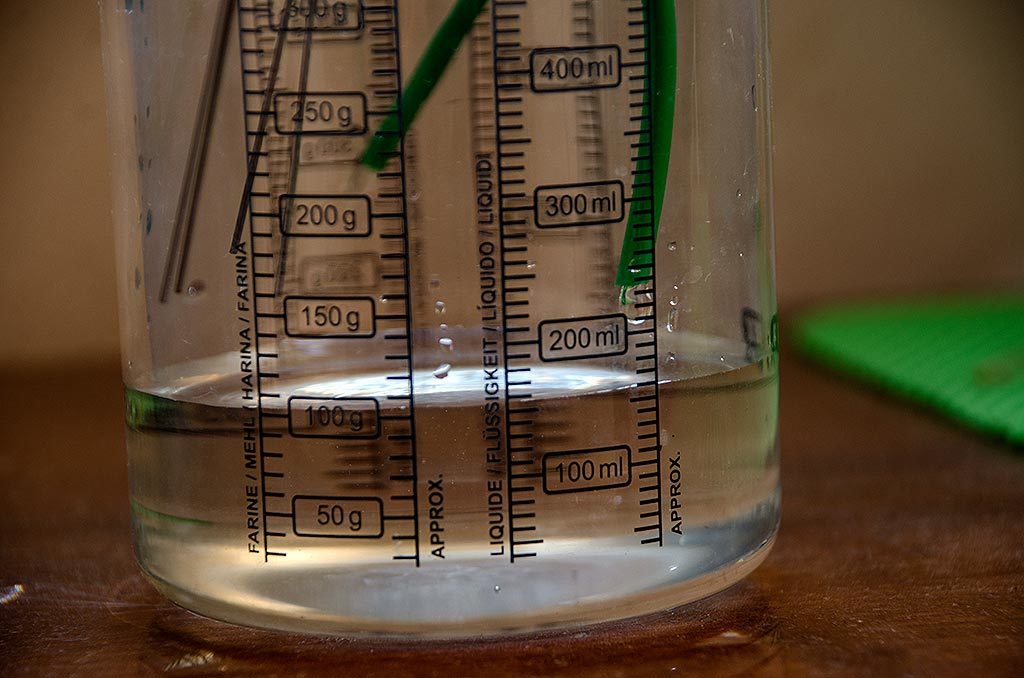
Accordingly, it is possible to calculate how long each plant will need watering, and how much water in the bucket should be left for a month's leave. (To prevent evaporation, the bucket can be closed with plastic wrap by passing pump hoses through it).
You can change the capacity of the tips of drip irrigation. These are:

Their ability to pass water is limited by wrapping the spray head with a primitive needle regulator:

They are put on the hose:

... and installed in a pot:

But there is a problem - it is necessary either to use them on all branches of the irrigation system, or not to use it at all - otherwise the water will go only along the open branch, and from the spray head that restricts it, it drops only a couple of times. Hydraulics!
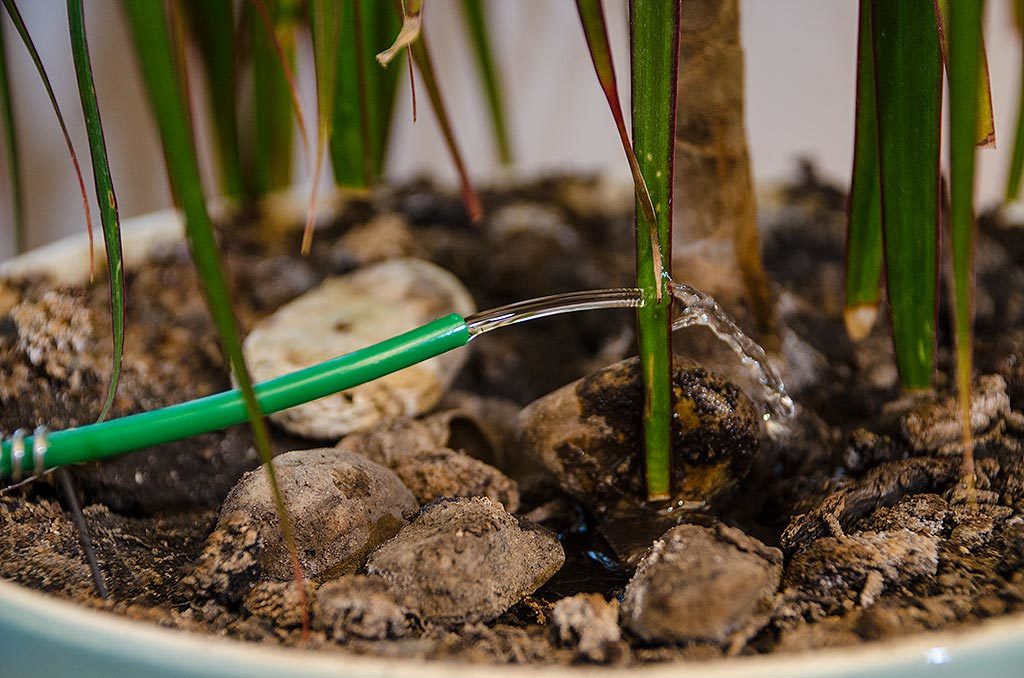
A fun detail - when the pump runs from the supply hose back to the bucket, a thin stream beats:
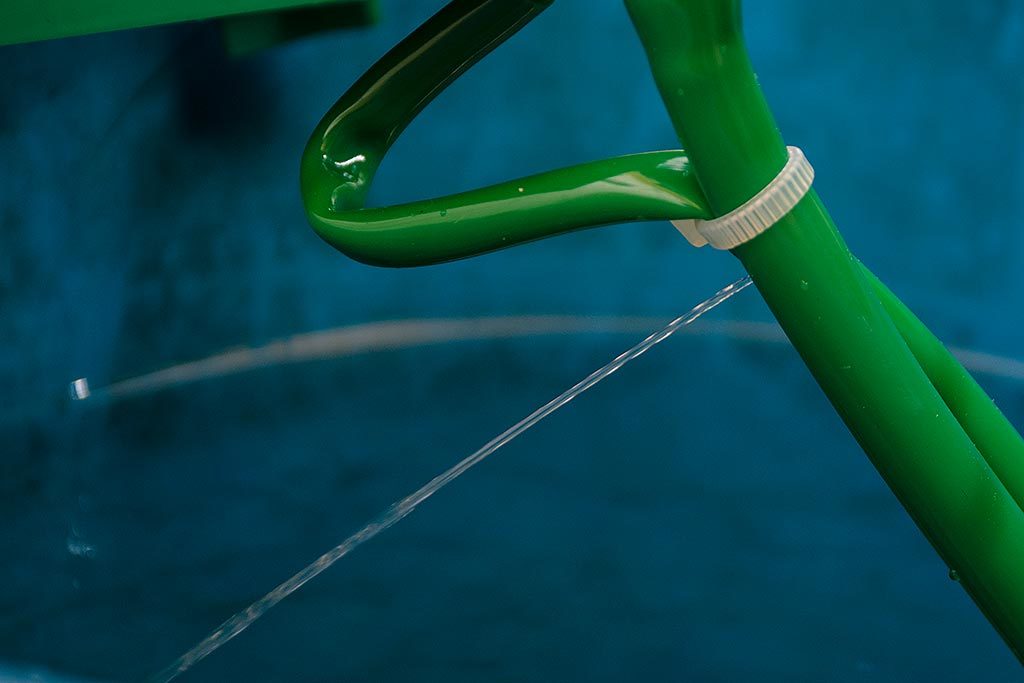
I thought it was damage to the hose, but no - the hole is clearly regular:
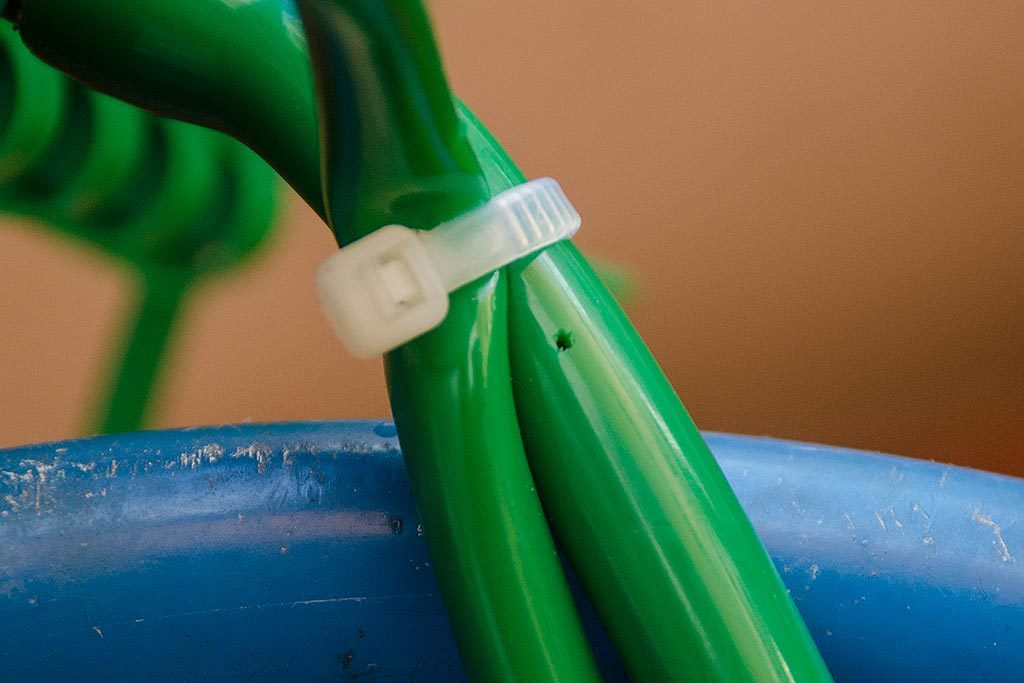
Apparently, this is such a "balancing nozzle", unloads the pump by pressure.
So, here is a watering system for two plants:
You can add eight more - but no more. It's a pity. As for me, it would not hurt to add several small threes to the kit in order to divide, if necessary, the flow from one branch to several plants that are less demanding to watering. It is necessary to try on the diameter of a triple with a car washer. They seem to be thicker at a glance, but maybe it will stretch? Then the hoses can be lengthened due to car wash tubes ... Yes, and low-voltage car valves ... An interesting idea ... * left to think about further tuning of the system *
Conclusions:
This is a practical solution that works right away, out of the box. Readers of the site have the opportunity to purchase the AutoLayka automatic watering system at 10% discount using the GEEKT-LEIKA code.which is valid 14 days from the date of publication of this article. As for me, inexpensive - especially in the format of a gift. I can immediately offer several cheaper and versatile self-made solutions "made of clay and sticks", but as a gift, this will not work.
Advantages:
• Ready solution, all in a set.
• Easy to set up even for a retired humanities
• Do not spoil the interior, if you find a nice bucket.
• Inexpensive.
Disadvantages:
• Lack of power supply from the mains
• Failure to secure the battery cover
• Limited system scalability (Not enough hose! We need triplets!)
I, in general, am satisfied with the acquisition. Now let's see how mom will like it.
Author: Pavel Ievlev, Voronezh
